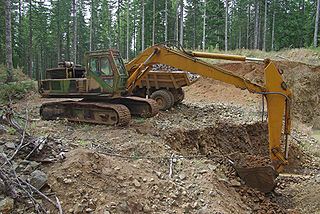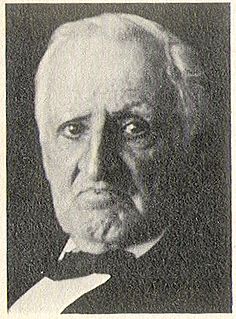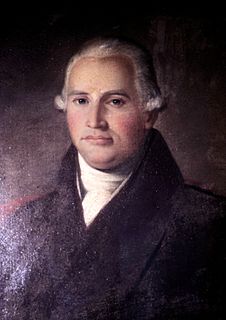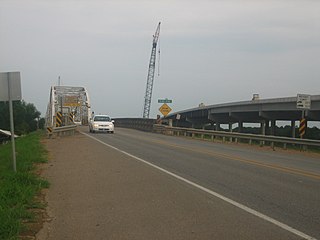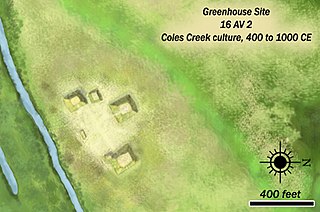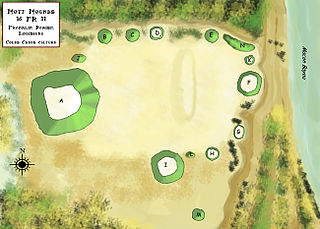 Artists conception of Troyville Earthworks | |
| Location | Catahoula Parish, Louisiana, United States |
|---|---|
| Region | Catahoula Parish, Louisiana |
| Coordinates | 31°37′36.59″N91°48′56.12″W / 31.6268306°N 91.8155889°W |
| History | |
| Founded | 100 BCE |
| Abandoned | 1100 CE |
| Cultures | Baytown culture, Troyville culture-Coles Creek culture |
| Site notes | |
| Excavation dates | 1931-1932, |
| Archaeologists | Winslow Walker |
| Architecture | |
| Architectural styles | platform mounds, plaza |
| Responsible body: private | |
Troyville Earthworks (16 CT 7) is a Woodland period Native American archaeological site with components dating from 100 BCE to 700 CE during the Baytown to the Troyville-Coles Creek periods. It once had the tallest mound in Louisiana at 82 feet (25 m) in height. It is located in Catahoula Parish, Louisiana in the town of Jonesville. [1] The site is the type site for the Troyville culture of the lower Ouachita and Tensas River valleys. [2] Before it was destroyed for bridge approach fill in 1931, the main mound at Troyville was one of the tallest in North America.
Smithsonian trinomials are unique identifiers assigned to archaeological sites in many states in the United States. They are composed of one or two digits coding for the state, typically two letters coding for the county or county-equivalent within the state, and one or more sequential digits representing the order in which the site was listed in that county. The Smithsonian Institution developed the site number system in the 1930s and 1940s. The 48 states then in the union were assigned numbers in alphabetical order. Alaska was assigned number 49 and Hawaii was assigned number 50 after those states were admitted to the union. There are no Smithsonian trinomial numbers assigned for the District of Columbia or any United States territories.

In the classification of Archaeological cultures of North America, the Woodland period of North American pre-Columbian cultures spanned a period from roughly 1000 BCE to European contact in the eastern part of North America, with some archaeologists distinguishing the Mississippian period, from 1000 CE to European contact as a separate period. The term "Woodland Period" was introduced in the 1930s as a generic term for prehistoric sites falling between the Archaic hunter-gatherers and the agriculturalist Mississippian cultures. The Eastern Woodlands cultural region covers what is now eastern Canada south of the Subarctic region, the Eastern United States, along to the Gulf of Mexico.

Native Americans, also known as American Indians, Indigenous Americans and other terms, are the indigenous peoples of the United States, except Hawaii. There are over 500 federally recognized tribes within the US, about half of which are associated with Indian reservations. The term "American Indian" excludes Native Hawaiians and some Alaska Natives, while Native Americans are American Indians, plus Alaska Natives of all ethnicities. Native Hawaiians are not counted as Native Americans by the US Census, instead being included in the Census grouping of "Native Hawaiian and other Pacific Islander".






